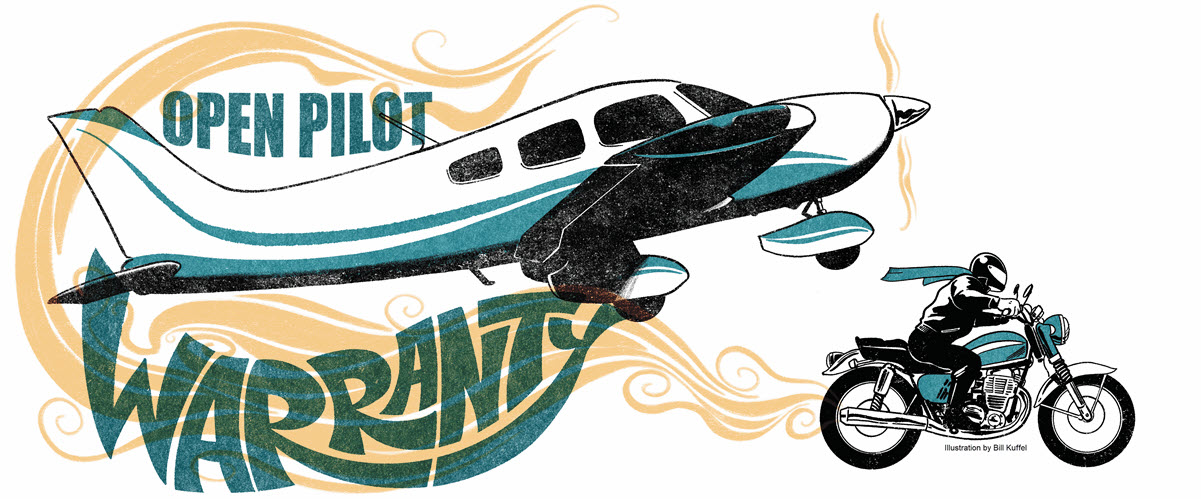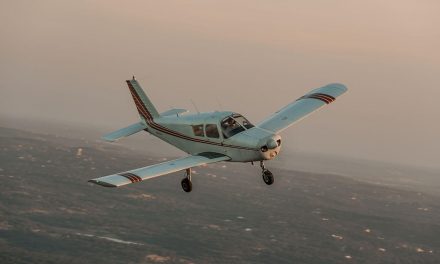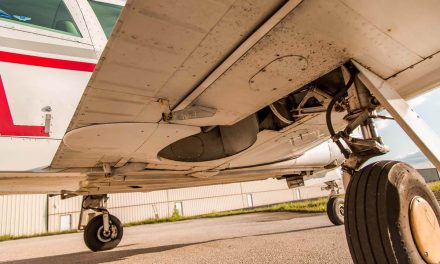I have owned motorcycles most of my life. In high school and during college I owned a custom Honda and a couple of Harleys. When I was dating my wife and after we were first married, I would ride my motorcycle to family events, even though my in-laws never really liked motorcycles. Although, their dislike of motorcycles never stopped my brother-in-law from borrowing my keys and taking my motorcycle for a ride when he was back in town. The worst thing was, he would always ride across the front yard to the street, which got me into trouble. Now that I think about it, in all those years I never asked if he had a motorcycle license endorsement.
Anyway, the same is true with my car. If I had a vehicle and someone needed to borrow it, it was not a problem. Never once did I think about insurance. It was basically assumed that if I gave someone permission to operate my vehicle they were covered.
When I worked for my in-laws at the airport, if my father-in-law (he was the chief pilot) said you could fly the plane, you were covered by the insurance.
But things aren’t like that anymore.
New Insurance Rules
The auto insurance business has changed. Yes, there are some companies that still have permissive driver language, but most have “tightened up” on what they allow. One company now requires all family members of driving age, who could potentially use your vehicle (whether they live with you or not), to be named on the vehicle. If they aren’t, they would not be covered by the policy. If you loan it to a neighbor, maybe, but family, not necessarily anymore.
The collector car business has always been a little more restrictive than regular car insurance, but even it has gotten more restrictive. It’s closer to the aviation business. Collector cars typically have an agreed value and are unique. This means insurers put more driving/driver restrictions on collector cars than daily use vehicles. Many collector car insurance companies require that anyone with a license and living in the household (or has access to the vehicle) must be named or excluded from the policy.
Additionally, collector car companies have always put minimum age limits on drivers. For example, if you are not 25 years old you cannot be listed as a driver. Sometimes they require five or ten years of experience prior to being listed as a driver.
The idea is that aircraft insurance policies have always had pilot requirements and limitations as to who can fly your aircraft; just like auto insurance companies. And they have gotten more restrictive; just like auto insurance companies. One of the biggest issues is that the average car owner or aircraft owner probably doesn’t know what those restrictions are. Every policy is different.
Open Pilot Warranty (OPW)
Aircraft owners want to let people fly their aircraft – friends, family, or (as a surprise to me) people they don’t even know. Since my early years of motorcycle ownership (and one stolen motorcycle), I no longer let anyone ride my motorcycles unless I know them very, very well – or I am selling it and they give me the money first.
Same with my aircraft: unless I know the pilot well (or I have their money in hand) I don’t let them fly my aircraft. This is my choice.
Let’s back up a bit and start here: If you own an aircraft and have an insurance policy, you need to be named or excluded as a pilot on that policy. If you are named, you are covered to fly the aircraft (pending you meet whatever pilot requirements they give you). Owners and anyone who is going to fly the aircraft regularly should also be added. For example, if you have family or friends that want to fly the plane on a regular basis, they need to be named on the policy.
If you have other pilots you would like to allow to occasionally fly your plane, that is typically reserved for the Open Pilot Warranty (if there is one).
Open Pilot Warranties are a list of requirements that, if met, would allow a pilot to fly an aircraft, with the permission of the owner, and be covered under their policy, even if they aren’t named on the policy. These requirements typically include minimum ratings/certificates, hours, sometimes age, etc. A pilot needs to meet all of the requirements listed in the OPW in order for it to cover them.
OPWs are typically reserved for aircraft that are easy to fly, well known, or have high production numbers. If you have a unique, weird, hard to fly or some other type of unusual plane, you might have “Named Pilot Only” coverage in lieu of the OPW. That means if the pilot is not named and approved by the underwriter, there is no insurance coverage if they fly the plane.
Most OPWs do not have an age limitation, but that is changing. One company has an OPW that not only has ratings and hour requirements, but also an age range of 25 to 65 years old. I assume more will follow as pilot age is becoming a greater issue in the insurance industry.
Also, some companies have a training requirement in the OPW. If you fly a cabin class or pressurized aircraft (or turbo prop or jet) you will have annual ground and flight training requirements. Those will typically be for all named pilots and pilots that fly under the OPW.
An example of a basic OPW for a light single engine retractable gear aircraft:
“Any pilot having an instrument rating who has logged a minimum of 750 hours total time and 150 hours in retractable gear aircraft and 10 hours in the same make and model as this aircraft.”
This specific OPW has no age limits, and no limit as to what type of retractable gear hours. There is a requirement of a minimum of 10 in the same make and model. The make and model are specific to the aircraft that is insured. If you do not have the make and model hours, you are not covered to fly the aircraft. Let’s say this is the OPW for a Piper Lance or a Cessna 210. You have more than 10 hours in a Piper Arrow or a Cessna 172RG but not the make and model (Lance or 210). No, you are not covered to fly.
Most OPW’s also include a minimum pilot certificate requirement. An example for this would be, “…must hold a certificate issued by the Federal Aviation Administration designating that person a recreational, private, commercial or airline transport pilot, airplane category, with single engine land rating.”
CFIs and Student Pilots
It’s important to note that most OPWs do not include student pilots. Student pilots need to be named and approved on a policy. Commercial instruction and rental policies are about the only ones that might have an OPW that includes students.
Regardless of the pilot certificate held (Private to ATP), if there is training required, the training must be done by a qualified CFI until the specified training is accomplished. A few companies have also added language about the CFI. Just because your buddy is a CFI doesn’t mean he can give you training in the aircraft. He too will need to meet minimum requirements.
One example of this is: “Only the named pilots are authorized to receive flight training in this aircraft. The training must take place with a Certified Flight Instructor who has a minimum of 5 hours in this make and model aircraft.”
This is important because we see aircraft owners who want to name their CFI to the policy for one of two reasons: They either want to get training for themselves or they want to train their kids or friends without naming the student on the policy (too much money or not even possible). This language states that if the pilot getting training is not a named pilot, they are not approved to get training.
We also see CFI’s that do not have any hours in the aircraft (they may have tens of thousands of hours, but they have zero hours in this specific make and model). They are not approved to give the training. Can they be approved? Possibly…but it would have to be discussed with an underwriter. We have CFI’s that were approved to fly the aircraft solo for a minimum number of hours before providing the training. And yes, some were never approved. If they do not meet the minimum requirements to give you the required dual, the dual might not count in the event you have an accident.
Finally, to reiterate, before you let someone fly your aircraft or offer to provide training, make sure they meet the policy requirements. If they don’t, you a reknot covered in the event of a loss.






